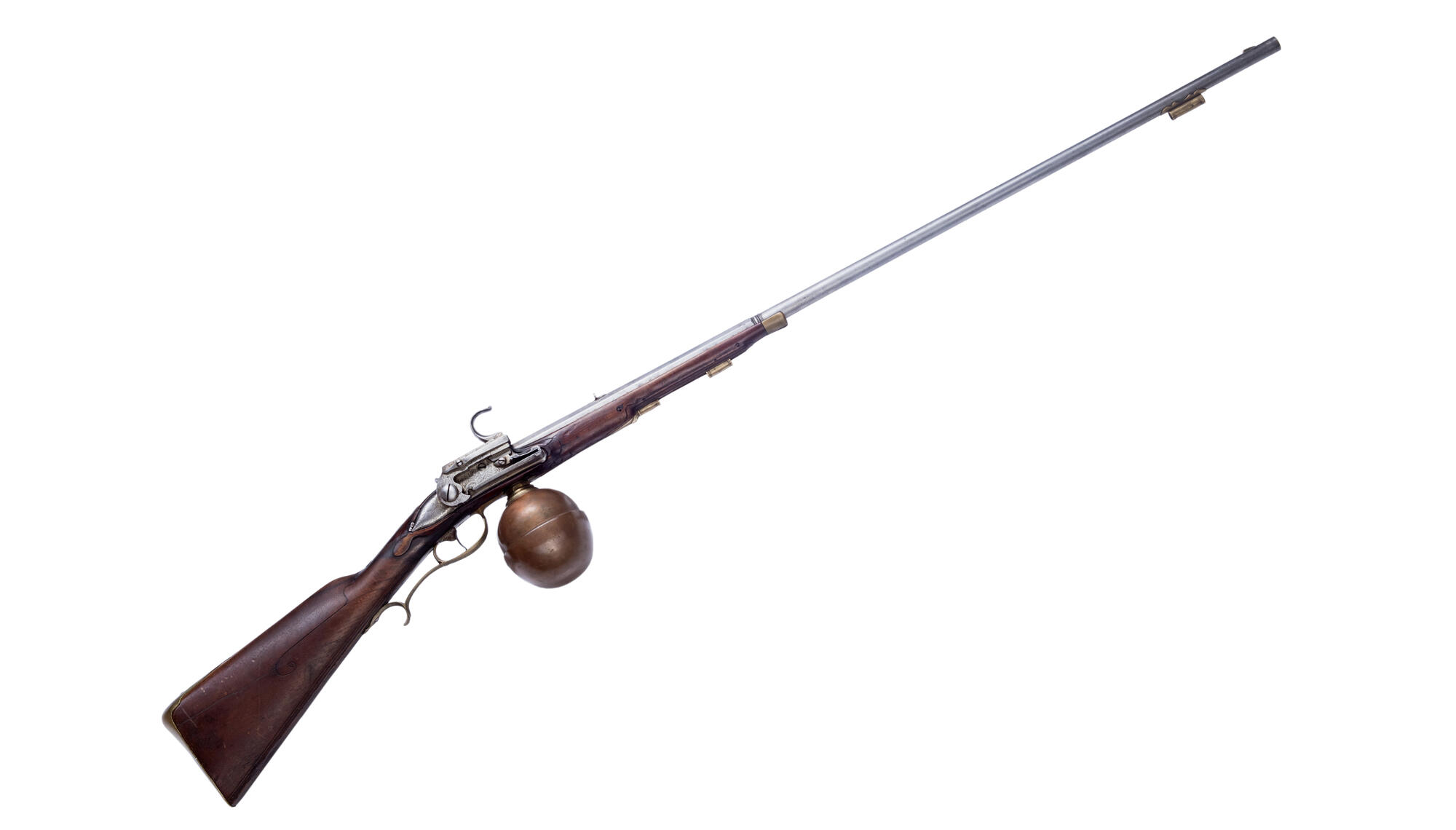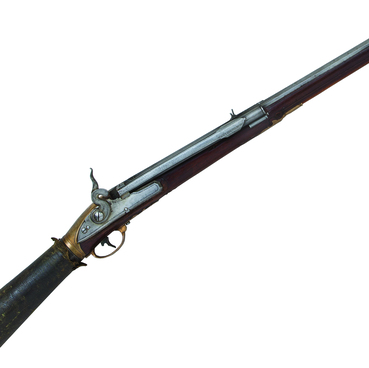The gunsmith who made the air gun from the Gatchina Palace and Estate Museum is unknown, but the time of its manufacturing has been established — it was created in the middle of the 18th century. European gunsmiths started producing efficient air guns as early as in the 17th century.
Depending on their construction, air guns had different characteristics and so were used for various purposes: from shooting targets within a room to hunting big game and even for warfare. Air guns had many benefits as compared to firearms. First of all, they could shoot almost without a sound. There were no accompanying ‘special effects’, such as flames or smoke, either. The owner did not have to keep and regularly renew the supply of gunpowder or take care that it did not become damp.
There was no need to clean away powder fouling and the risk of malfunction was much lesser. However, there were significant drawbacks as well. Air guns were harder to produce and as a result — more expensive. They were usually more sensitive to contamination and were not so well suited for the use in the field. Moreover, air guns were fitted with compressed air reservoirs and there was a risk that when air was being pumped into the reservoir, it could blow out. Such accidents with tragic consequences were well known.
And finally, the society of that time was prejudiced against air guns. Because they were silent, they were deemed suitable for crimes and in a number of cities their production was restricted or prohibited. It may explain why many air guns preserved to this day have no signatures of their gunsmiths or indication of the place or time of manufacturing. This air gun has a spherical copper reservoir for compressed air fixed on the forged iron barrel.
Copper was often used for this kind of weapons because when blown out copper did not shatter. In order to fill the reservoir with compressed air people used hand pumps similar to modern bicycle pumps. Previously there were several such pumps in the Gatchina Museum collection, but unfortunately they were lost during the World War II. On the bottom plane of the barrel at the breech end there is an engraved number: ‘XIIII’. The gun has a flintlock also known as ‘bar-lock’. The mainspring is located on the outer side of the lock plate. The parts of the lock are decorated with an engraved pattern of rocaille and floral motifs.
The stock is made of nut wood and carved with rocaille patterns in several places: by the tang of the breech, at the edges of the cheek piece and by the lower ramrod pipe. The trigger guard is long with a finger spur. The front end of the trigger guard is made in the form of a ring which fits to a pipe soldered to the barrel. The pipe is used to screw the compressed air reservoir on. The solid lock bridle is very similar in form to the lock plate. The trigger guard and the inner side of the lock bridle are marked with the number ‘XIIII’.



